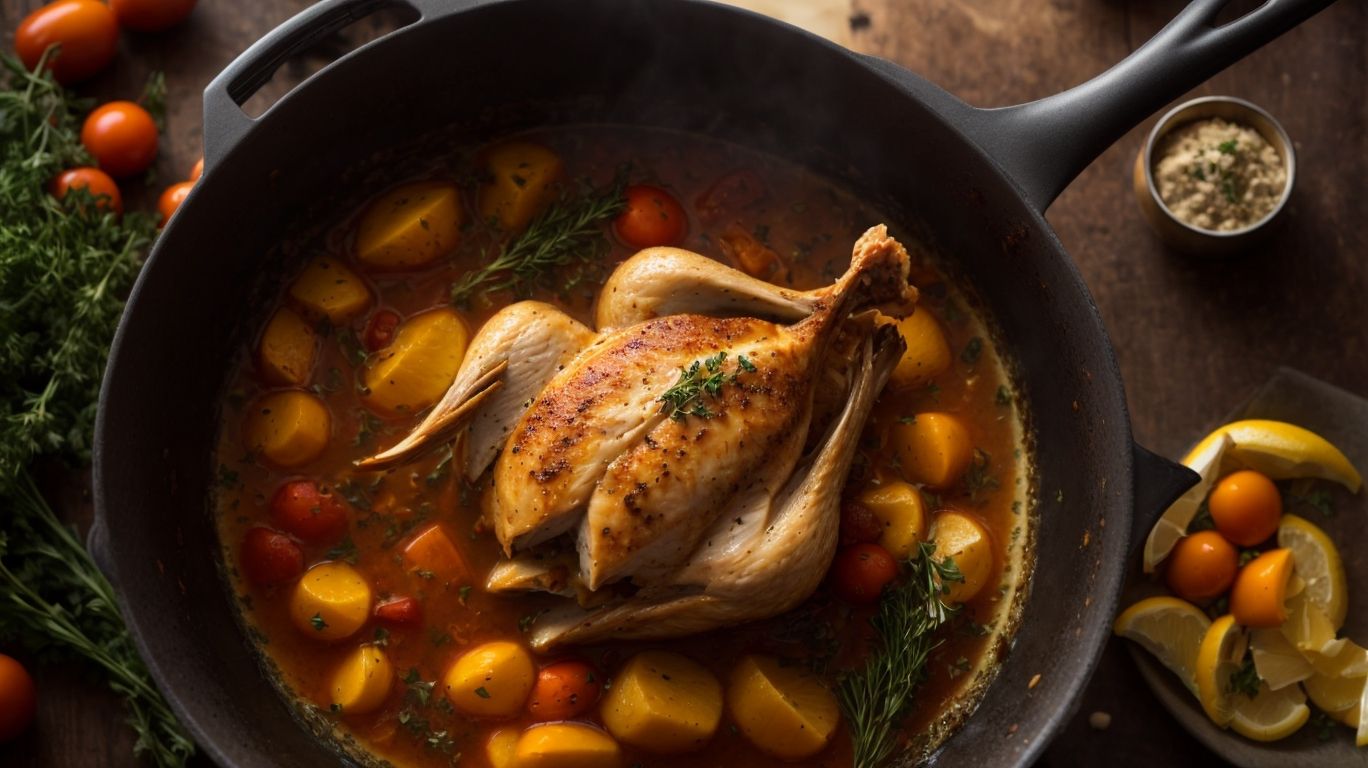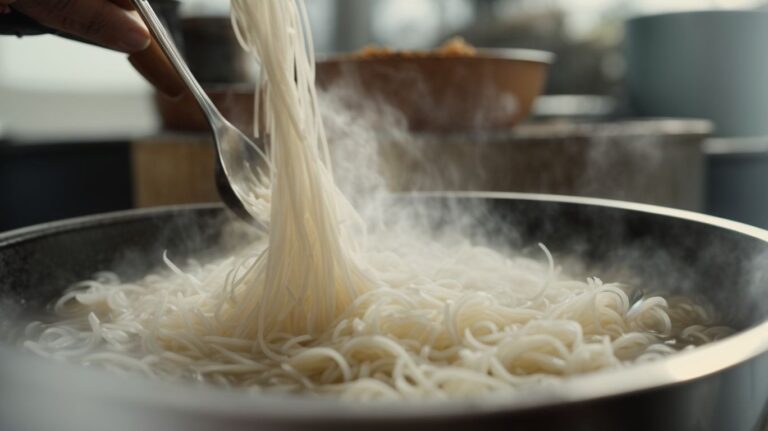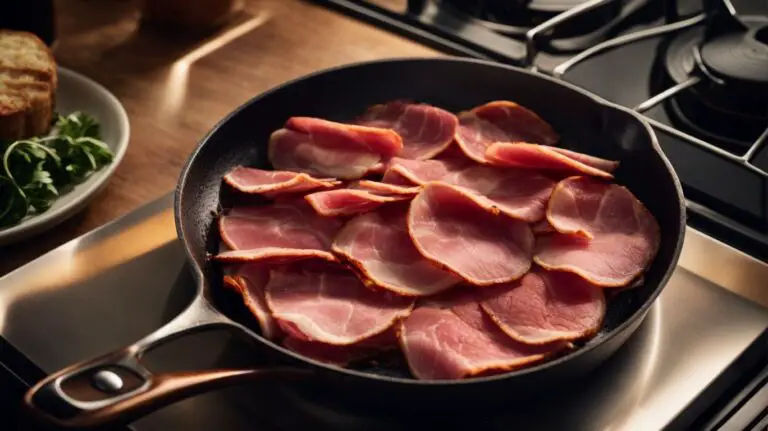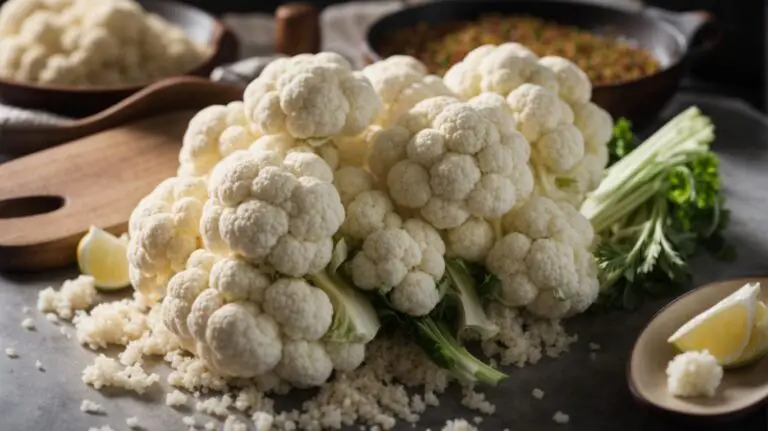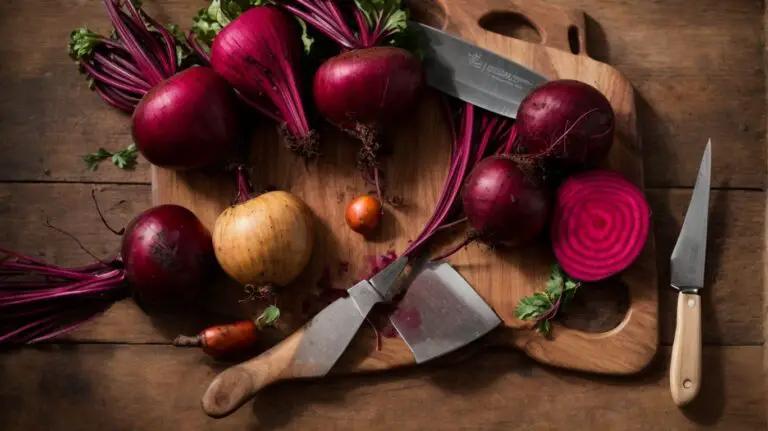How to Cook Whole Chicken Without Oven?
Looking to cook a whole chicken but don’t have an oven?
We will explore the best methods for cooking a whole chicken without an oven. From stovetop to grill to Dutch oven, we will cover all the alternative cooking options available to you.
We will also discuss the differences between roasting and baking, the equipment you will need, how to prepare the chicken, and how to tell when it’s cooked to perfection.
Let’s get cooking!
Key Takeaways:
What is the Best Method for Cooking Whole Chicken without Oven?
When looking for the best method to cook a whole chicken without an oven, it’s essential to consider alternative techniques that can yield delicious and flavorful results.
One popular method is using a skillet on the stovetop. The advantage of this technique is that the chicken gets a nice sear on the outside, locking in juices and creating a flavorful crust.
Another option is grilling, which brings out a unique smoky flavor and crispy skin.
Rotisserie cooking is great for evenly cooking the meat, allowing it to baste in its own juices, resulting in tender and succulent chicken. To add depth to the flavor, consider butterflying the chicken and seasoning generously with fresh herbs before cooking.
What is the Difference between Roasting and Baking?
Roasting and baking are both popular cooking methods for preparing chicken, but they differ in terms of technique, temperature, and overall outcome.
Regarding roasting, the main distinction lies in the higher temperatures used compared to baking. Typically, roasting involves cooking poultry at temperatures above 400°F, resulting in a more caramelized exterior and moist, tender interior. This method enhances the natural flavors of the chicken and creates a rich, savory profile.
On the other hand, baking chicken involves lower temperatures, usually around 350°F. This gentler cooking process allows the chicken to cook more evenly, yielding a slightly drier texture than roasting but still maintaining a moist and flavorful outcome.
What Equipment Do You Need for Cooking Whole Chicken without Oven?
To cook a whole chicken without an oven, you’ll need essential kitchen equipment that can replicate the oven’s cooking environment and ensure juicy, well-cooked poultry.
One of the key tools you’ll require for this cooking adventure is a Le Creuset Dutch Oven. This versatile pot with a tight-fitting lid helps in slow-cooking the chicken to perfection by retaining moisture and distributing heat evenly. A trusty skillet will come in handy for searing the chicken and creating a crispy outer layer that locks in the juices.
Incorporating olive oil in your seasoning mix before cooking helps in browning the skin and infusing rich flavors. Don’t forget to sprinkle garlic powder liberally for a delicious aromatic twist that will fill your kitchen with enticing scents.
When you bring out the grill as your final tool, you are adding a touch of smokiness and char that enhances the overall flavor profile of the chicken. By utilizing these tools effectively, you can achieve a mouthwatering dish that will impress your family and friends alike.
What are the Alternatives to an Oven?
When you don’t have access to an oven, exploring alternative cooking methods can open up a world of possibilities for preparing delicious chicken dishes.
One quick and easy alternative to oven roasting is utilizing the stovetop. Pan-searing chicken on the stovetop can result in juicy meat with crispy skin, offering a different texture than oven-roasted chicken. Stovetop cooking allows for easy monitoring and quick adjustments to ensure the chicken is cooked to perfection.
Another flavorful option is grilling chicken. Grilled chicken has a distinct smoky taste and charred exterior, providing a unique flavor profile that oven-roasted chicken often lacks. Grilling also adds lovely grill marks which not only look appealing but also enhance the overall taste.
Rotisserie cooking is yet another fantastic method, where the chicken rotates slowly, allowing the juices to baste the meat continually. This results in succulent and evenly cooked chicken with a beautifully crispy skin. Rotisserie cooking can be done in specialized rotisserie ovens or even on a grill with a rotisserie attachment, offering versatility in preparing roast chicken dishes.
How to Prepare the Chicken for Cooking?
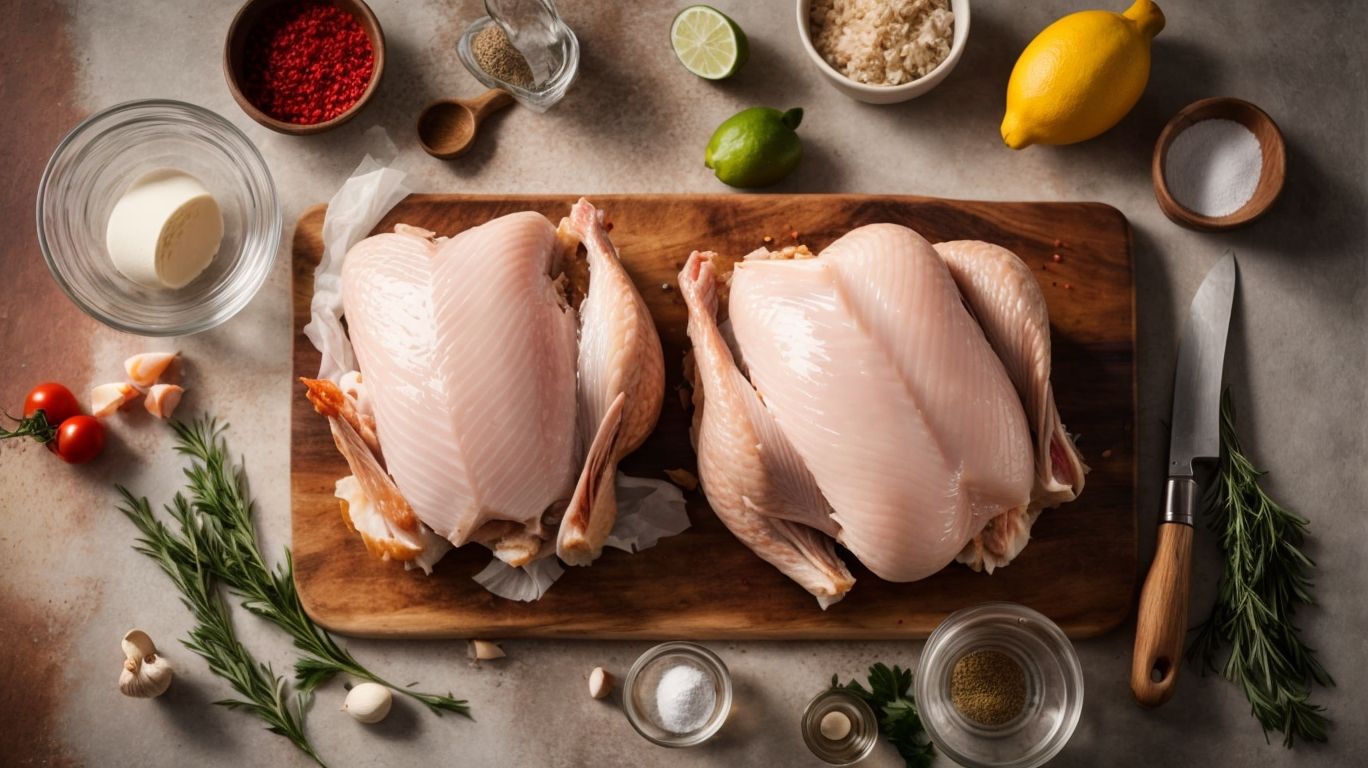
Credits: Poormet.Com – Paul Gonzalez
Preparing the chicken before cooking is a crucial step that can enhance its flavor, tenderness, and overall juiciness, ensuring a delightful dining experience.
One popular method to elevate the flavor profile of chicken is through brining. Brining involves soaking the chicken in a saltwater solution, which helps the meat retain moisture and impart a subtle saltiness.
Before brining, you can season the chicken with herbs like sage for an added fragrance. Another technique to infuse flavor is marinating. Marinating chicken in a mixture of white wine, herbs, and spices for a few hours or overnight can result in a tender and flavorful dish.
Should You Brine the Chicken?
Brining the chicken can significantly improve its moisture retention, tenderness, and flavor profile, resulting in a more succulent and delicious final dish.
One of the key benefits of utilizing a brine for poultry is its ability to infuse the meat with extra moisture, making it less likely to dry out during the cooking process. By soaking the chicken in a solution of water, salt, sugar, and aromatics like herbs and spices, the meat absorbs the liquid and becomes juicier and more flavorful.
Regarding enhancing the taste of brined chicken, consider experimenting with different brine recipes. For a classic option, a basic brine consisting of water, salt, sugar, and perhaps some black pepper can work wonders.
For those looking to elevate the richness of the chicken, adding ingredients like butter to the brine mixture can introduce a luxurious element that results in a more decadent and indulgent dish.
What Seasonings Can You Use?
Choosing the right seasonings can elevate the flavor profile of your chicken dish, adding layers of taste and aroma that enhance the overall dining experience.
Regarding seasoning chicken, certain spices like sage, paprika, and garlic powder can truly work wonders. Sage, with its earthy and slightly peppery notes, brings depth to the chicken’s flavor, making it a popular choice for roasting or pan-searing. Paprika, on the other hand, offers a subtle sweet and smoky flavor that complements the chicken beautifully. And let’s not forget garlic powder, which adds a delicious savory element.
For crispy skin, a great tip is to season the chicken generously with a blend of these spices, ensuring that they cover the entire surface. This not only flavors the meat but also helps create a flavorful and crispy exterior when cooked. When making gravy, the remnants of these seasonings left in the pan after cooking the chicken can infuse the sauce with rich, aromatic flavors, providing a delicious accompaniment to the dish.
How to Cook Whole Chicken on a Stove?
Cooking a whole chicken on a stove can be a convenient and efficient method that produces juicy, flavorful meat with crispy skin and tender textures.
When preparing a whole chicken on the stovetop, start by heating a heavy skillet to ensure even cooking. Searing the chicken in a hot skillet before roasting it helps to lock in the juices and achieve that desired golden-brown crust. Sauteing onions and carrots alongside the chicken adds depth of flavor and aromatic richness to the dish.
To maintain moisture while cooking, cover the skillet with a lid or foil, allowing the steam to circulate and infuse the chicken with moisture. This method guarantees a juicy interior while still achieving that crispy skin everybody loves. Remember to baste the chicken occasionally to keep it succulent and flavorful throughout the cooking process.
What is the Stovetop Method?
The stovetop method involves searing the chicken to achieve crispy skin and then gently simmering it to ensure even cooking and juicy tenderness.
After searing the chicken in a hot pan with a drizzle of oil, the Maillard reaction occurs, creating that desirable browned crust which adds a depth of flavor to the dish. This initial step not only locks in the chicken’s natural juices but also sets the stage for the subsequent braising process.
Once the chicken is seared to perfection, it’s time to introduce the butter or cream sauce, which will further enhance the tender texture and add a rich, velvety finish to the dish. The moisture from the sauce helps to keep the chicken succulent throughout the simmering process.
How to Use a Dutch Oven for Cooking Whole Chicken?
Utilizing a Dutch oven for cooking a whole chicken can result in succulent, well-cooked meat with crispy skin and rich flavors that are sure to delight your taste buds.
When searing the chicken in the Dutch oven, make sure to get a nice, golden-brown color on all sides to lock in the juices and enhance the flavor profile. Once the chicken is seared to perfection, consider deglazing the pan with a splash of white wine to add a depth of flavor to your dish. From there, you can layer in sliced potatoes and aromatic herbs before slow braising the chicken to tender perfection. The resulting dish will not only fill your home with delicious aromas but also provide a hearty meal that is perfect for any occasion.
How to Cook Whole Chicken on a Grill?
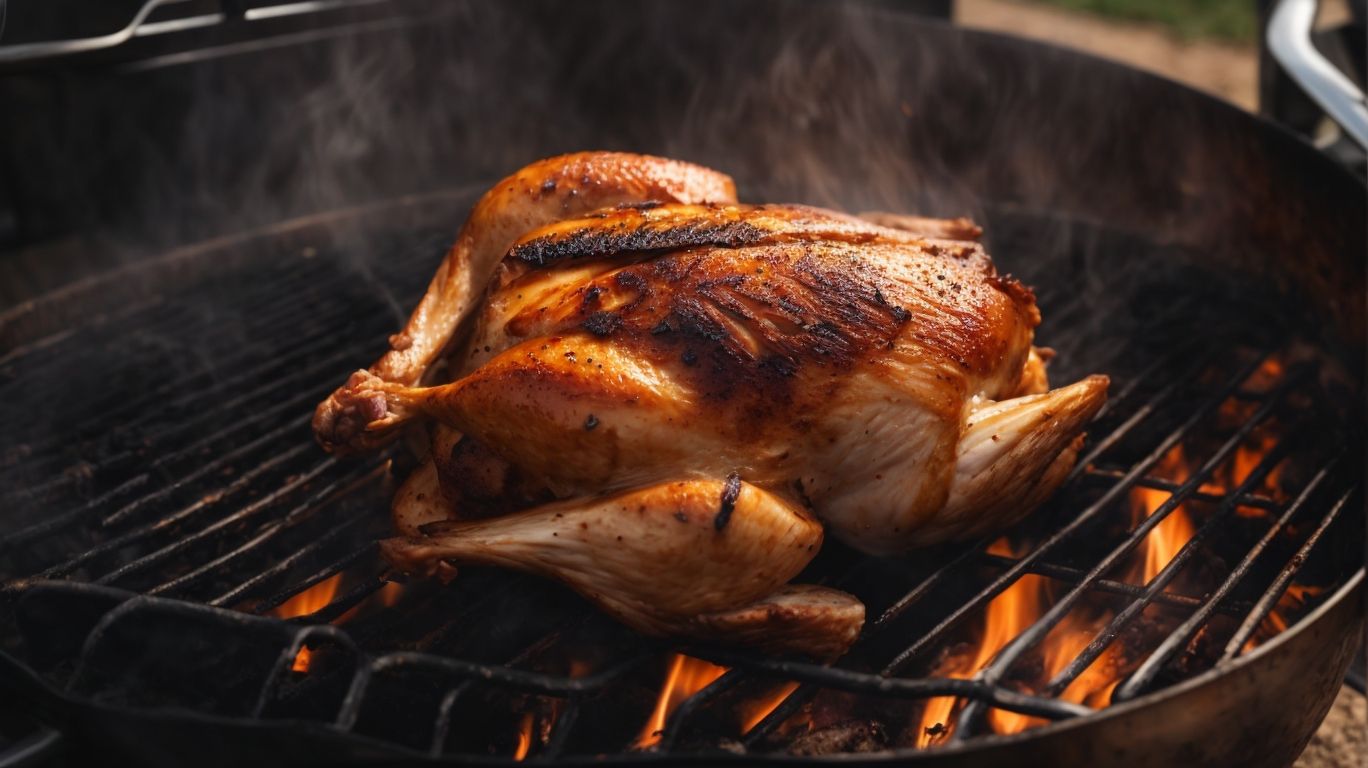
Credits: Poormet.Com – Matthew Garcia
Grilling a whole chicken imparts a unique smoky flavor and charred essence to the meat, creating a deliciously barbequed dish that is perfect for outdoor gatherings.
Before grilling, it’s essential to prepare the chicken properly. Start by marinating it in a mixture of olive oil, herbs, and spices to enhance its flavor and ensure it stays tender during the cooking process. Let the chicken soak in the marinade for at least a few hours or preferably overnight to allow the flavors to penetrate the meat.
When it’s time to grill, set up your grill for indirect heat cooking. This method helps cook the chicken through gently without burning the exterior. Place the marinated chicken away from direct flames but close enough to absorb the smoky essence of the grill.
During the grilling process, basting the chicken with a brush dipped in the remaining marinade or a flavorful sauce will help keep the meat moist and infuse it with even more delicious flavors. Remember to baste regularly to prevent the chicken from drying out while cooking.
What is the Grilling Method?
The grilling method involves seasoning the chicken, setting up a two-zone fire for indirect cooking, and monitoring the temperature to ensure perfectly grilled poultry with a crispy exterior.
Regarding grilling turkey, the marinating process is crucial for imparting rich flavors and ensuring tenderness. Consider a marinade with a blend of olive oil, sage, garlic, and a splash of broth for that extra depth. Allow the turkey to marinate in this mixture overnight in the refrigerator to let the flavors infuse.
Grilling times will vary based on the size of the bird; a general rule is 10-15 minutes per pound over indirect heat until the internal temperature reaches 165°F. After grilling, remember to let the turkey rest for about 20 minutes before carving. This allows the juices to redistribute throughout the meat, ensuring a succulent and flavorful final result.
How to Use a Rotisserie for Cooking Whole Chicken?
Using a rotisserie for cooking a whole chicken can result in evenly roasted poultry with crispy skin and tender meat that showcases the flavors of the seasoning and herbs.
When preparing your chicken for the rotisserie, make sure to season it generously with a mix of onion, peas, and mushrooms along with your preferred herbs and spices. For best results, let the seasoned chicken sit in the fridge for a few hours to allow the flavors to penetrate the meat. When it’s time to cook, secure the chicken firmly on the rotisserie skewer and set the timer according to the weight of the bird for optimal cooking times.
How to Tell When the Chicken is Cooked?

Credits: Poormet.Com – Alexander Miller
Determining when the chicken is perfectly cooked is crucial to ensure food safety and enjoy a delicious dining experience without undercooked or overcooked poultry.
One of the most reliable methods to check for chicken doneness is by using a meat thermometer. Insert the thermometer into the thickest part of the meat, making sure it doesn’t touch the bone, until it registers at least 165°F (74°C). Visually inspect the juices; if they run clear with no pink tint, the chicken is likely done. Look for the skin to be crisp and golden, signaling a well-cooked exterior. When slicing into the meat, it should be tender and moist, indicating thorough cooking.
What is the Recommended Internal Temperature?
The recommended internal temperature for chicken and poultry is essential to ensure that the meat is cooked thoroughly and safe for consumption, minimizing the risk of foodborne illnesses.
When cooking chicken, it’s crucial to reach an internal temperature of at least 165°F to kill any harmful bacteria. For a juicy and flavorful outcome, consider seasoning with salt and black pepper before cooking. Achieving a crispy skin on your chicken pieces often involves a balance of heat and time in the oven or on the grill. Remember, different cuts may require slightly different cooking times, so always refer to cooking guidelines for specific poultry parts.
How to Check for Doneness without a Thermometer?
Checking for doneness without a thermometer requires utilizing visual and tactile cues, such as the color of the meat, juices, and texture to ensure that the chicken is cooked to perfection.
One method to determine if your chicken is ready is to use the butter trick. If you press a tablespoon of butter into the chicken and it easily melts and absorbs into the meat, then it’s likely cooked through. You can insert a knife into the thickest part of the chicken and ensure that the juices run clear, indicating that it’s done. Another way is to evaluate the texture – the chicken should feel tender and soft when cut or prodded. These quick and simple techniques can be just as effective as using a thermometer, giving you confidence in your cooking results.
Frequently Asked Questions
How to Cook Whole Chicken Without Oven?
Can you cook a whole chicken without an oven?
Yes, there are several methods for cooking a whole chicken without an oven, such as grilling, slow cooking, or pressure cooking.
What is the best way to cook a whole chicken without an oven?
What is the best way to cook a whole chicken without an oven?
It really depends on personal preference, but some popular methods include roasting on a grill, slow cooking in a crockpot, or pressure cooking in an Instant Pot.
Can you cook a whole chicken in a slow cooker?
Can you cook a whole chicken in a slow cooker?
Absolutely! Slow cooking is a popular and convenient method for cooking a whole chicken without an oven. Just make sure to use a large enough slow cooker and follow a trusted recipe.
Is it safe to cook a whole chicken without an oven?
Is it safe to cook a whole chicken without an oven?
Yes, as long as the chicken is cooked to the proper internal temperature (165°F), it is safe to cook a whole chicken without an oven using various cooking methods.
What equipment do I need to cook a whole chicken without an oven?
What equipment do I need to cook a whole chicken without an oven?
The equipment needed will depend on the cooking method you choose. For grilling, you’ll need a grill and tongs. For slow cooking, you’ll need a slow cooker. And for pressure cooking, you’ll need an Instant Pot or other pressure cooker.
Can I use any marinade or seasoning for cooking a whole chicken without an oven?
Can I use any marinade or seasoning for cooking a whole chicken without an oven?
Yes, you can use any marinade or seasoning you prefer for cooking a whole chicken without an oven. Just make sure to follow the instructions on the recipe and adjust cooking time and temperature accordingly.

